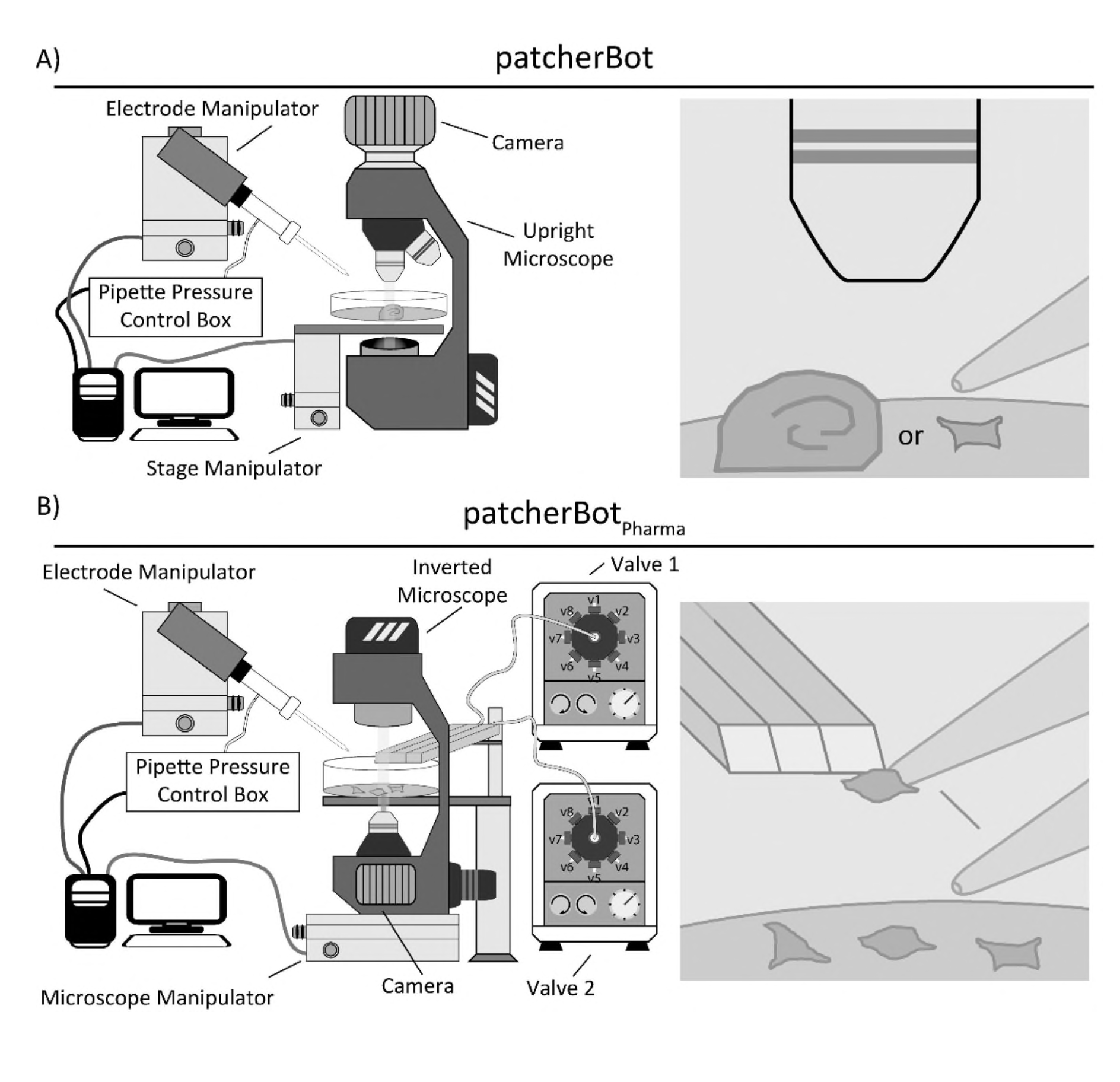This automated intracellular pharmacological electrophysiology robot, known as patcherBotPharma, substantially reduces hands-on time in pharmacological patch-clamp experiments. Expanding on Georgia Tech’s robotic patcherBot, this new system can perform highly efficient ligand-gated ionotropic receptor experiments with millisecond fluid exchange handling. The patcherBotPharma uses a conventional patch-clamp rig and includes automated control of the microscope, bath solution, a solution manifold, and a piezoelectric translator.
The patcherBotPharma enhances patch-clamp approaches by decreasing operator interaction time, reducing human bias, increasing experiment yield, allowing more complicated experimental designs, and enabling experiments that require high volumes of recordings. The increased efficiency of patcherBotPharma may help address scientific questions previously considered impractical using conventional approaches because of the large, time-consuming data acquisition requirements.
- Increased efficiency: Autonomous operation ensures accurate placement of components and creates high success rates for experiment completion.
- Decreased human effort: Performs typical ligand-gated ionotropic receptor experimentation protocols autonomously for up to a tenfold reduction in operator interaction time over the duration of the experiment
- Higher experiment yield: Rapidly replicates previous datasets, reducing the time to produce an 8-point concentration response curve from weeks of recording to ~13 hours of recording
- Reduced human bias: Explicitly defined protocols prior to experiment execution reduce chances of human bias when collecting data.
- More complex studies: Enables more complicated experimental designs by reducing human effort and making simultaneous operation of multiple patcherBotPharmas possible for increased data collection; this is important for experiments requiring high volumes of recordings
- Drug screening and development
- Diagnostic testing of genetic variation in ion channels
Ion channels, including ligand-gated ionotropic receptors, play a vital role in nervous system signaling. The gold standard technique for measuring rapid receptor responses to agonists is manual patch-clamp electrophysiology, capable of the highest temporal resolution of any current electrophysiology technique. The technique has enabled many discoveries in pharmacology, physiology, and neuroscience. Patch-clamp recording can accurately measure the time-course of postsynaptic or post-junctional currents and can fully resolve ion flux and the rapid transitions of individual ionotropic receptors.
Patch-clamp electrophysiology research is a powerful technique, yet few scientists use it because it is time-consuming in terms of both training and execution. Even for skilled practitioners, the complexity and effort required for comprehensive pharmacology experiments (pharmacological screening or evaluation of full concentration-response relationships) can be impractical. Alternative methods and machines sacrifice the high precision of patch-clamp electrophysiology in order to achieve higher throughput.
Recently, Georgia Tech researchers developed an automated “patcherBot” that uses robotic vision, pipette pressure control, and electrode cleaning to execute the steps required to perform patch-clamp electrophysiology without human intervention. While the patcherBot is highly proficient at this task, it cannot perform many assays on ligand-gated ionotropic or pharmacological studies.
Therefore, the Georgia Tech inventors developed patcherBotpharma that can perform pharmacological concentration-response experiments and record ligand-gated ionotropic receptor responses to fast agonist exposure (millisecond exchange time) with automated control of the microscope, bath solution, a solution manifold, and a piezoelectric translator.

Comparison of patcherBot vs patcherBotPHARMA: (A) The previously published PatcherBot assembled from an upright microscope, high sensitivity camera, custom pressure control box, quasi-4 axis electrode manipulator, and a motorized stage; (B) The patcherBotPHARMA, assembled from an inverted microscope, high sensitivity camera, custom pressure control box, quasi-4 axis electrode manipulator, a motorized microscope manipulator, two solution valves, and a solution exchange manifold
